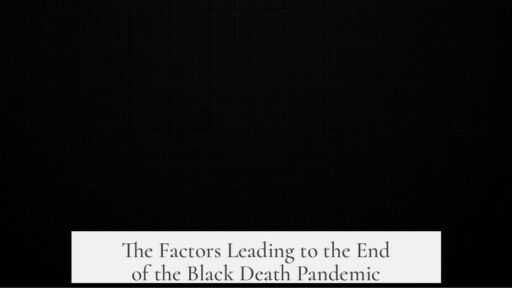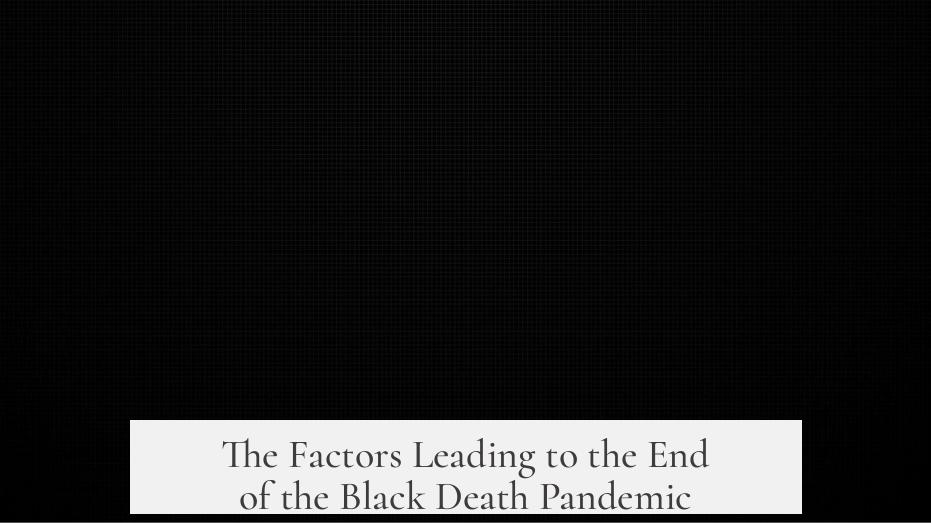The Black Death ended gradually through a combination of factors, rather than a single event. The initial outbreak from 1346 to 1352 killed between 30% and 60% of Europe’s population. However, the plague did not vanish immediately after this period. Instead, smaller outbreaks continued until the 17th century. These later episodes were less deadly due to increased population resistance and improved management strategies.
The first key reason the Black Death’s initial wave burned out is that it exhausted the pool of susceptible hosts. After infecting a large share of the population, many survivors developed immunity, at least temporarily. Additionally, the extreme death toll meant fewer people were available to catch and carry the disease further. These intrinsic epidemic dynamics caused the rapid decline of the initial explosive outbreaks.
Alongside natural epidemiological factors, human responses evolved significantly. Early European societies had little knowledge to manage such a novel and deadly disease. After the initial devastation, communities learned to implement public health interventions that reduced transmission risks. For instance:
- By 1374, Milan ordered infected people to leave town to reduce spread.
- Between 1423 and 1462, northern-central Italian cities built plague hospitals to isolate the sick.
- Venice created quarantine hospitals for close contacts in 1471.
- In the 1510s, cities like Milan quarantined entire households suspected of infection.
- Florence in the 1520s housed infected people outside the city, providing food to prevent spread.
- By 1576, some cities began general quarantines of entire urban areas during outbreaks.
These strategies strengthened over centuries and form the basis of modern quarantine and isolation practices. Quarantine, which originated in response to the plague, remains a vital tool in controlling infectious diseases today.
Other societal changes contributed to plague decline. Modernization brought cleaner living conditions and personal hygiene practices. People bathed and changed clothes regularly, reducing contact with disease-carrying fleas or lice. The black rat, which hosted a flea species efficient at transmitting plague, was largely replaced by the brown rat, less effective at spreading the disease.
Additionally, state structures became more capable of enforcing public health measures in the 17th century. Stricter quarantines and better surveillance helped prevent large outbreaks, even though Yersinia pestis, the plague bacterium, remained present in animal reservoirs. Therefore, while plague infections still occur worldwide, including in wealthy countries, modern antibiotic treatments and public health systems prevent massive epidemics.
Despite extensive research, historians and epidemiologists still debate the exact causes behind the disappearance of plague epidemics from Western Europe after the 17th century. The interplay of immune resistance, changing rodent populations, improved hygiene, and strengthened quarantine measures all likely contributed. No single explanation fully accounts for the end of the Black Death’s dominance.
In short, the Black Death ended by burning through susceptible populations, followed by centuries of evolving human responses and environmental changes that limited its capacity to cause large outbreaks. The disease transformed from a deadly pandemic to a sporadic, manageable illness.
| Key Factors in Ending the Black Death |
|---|
| Exhaustion of susceptible hosts through high mortality and immunity |
| Introduction and refinement of quarantine and isolation practices |
| Improved sanitation and personal hygiene over time |
| Changes in rodent hosts reducing plague transmission |
| Stronger state enforcement of public health measures |
| Availability of antibiotic treatment in modern times |
- The Black Death’s initial deadly wave ended by depleting vulnerable populations.
- Subsequent smaller outbreaks were contained via quarantine and hospital isolation.
- Improved hygiene and environmental changes reduced plague spread.
- Modern public health systems and antibiotics now prevent large outbreaks.
- The exact combination of factors ending the Black Death remains partly uncertain.




